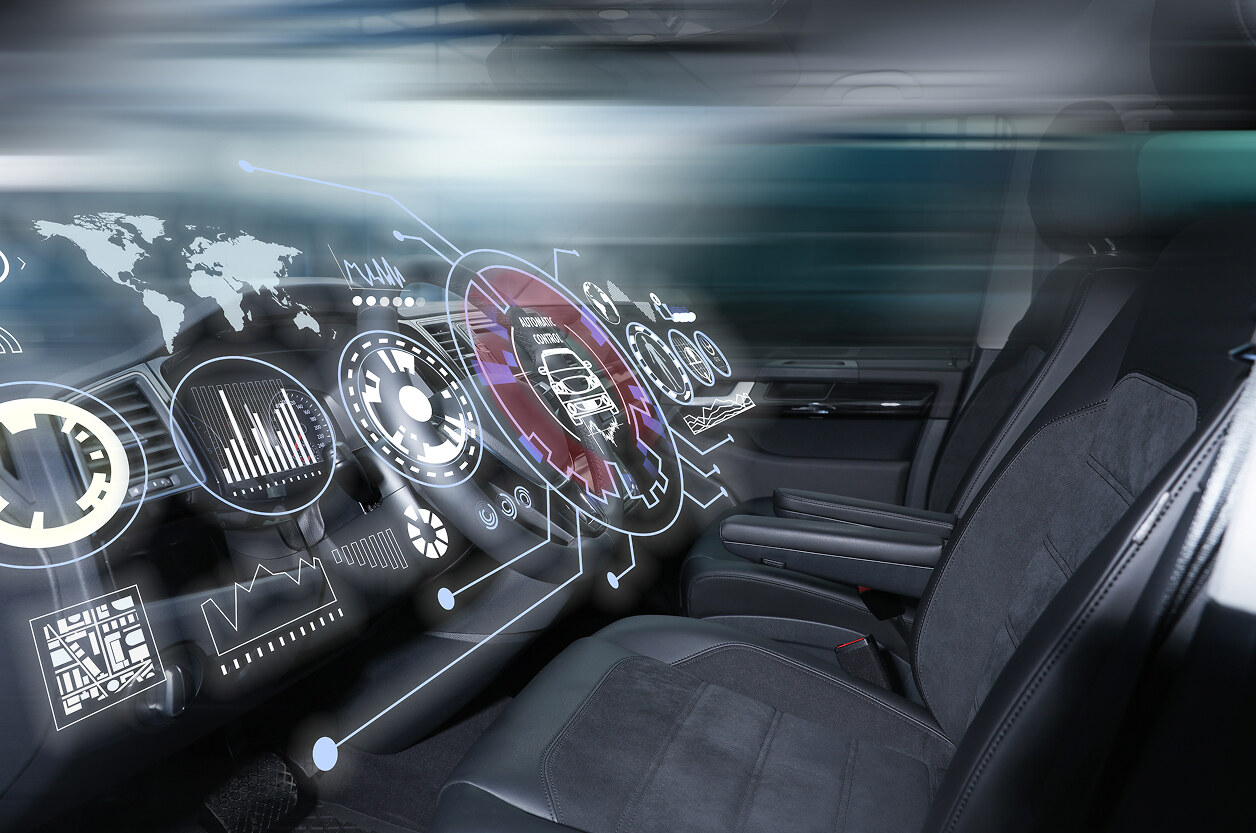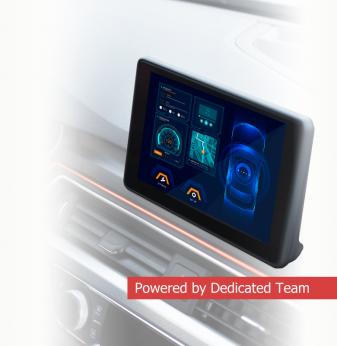How Simulation and Synthetic Data Are Powering the Next Generation of ADAS

Why AI Training Needs a Rethink
Developing autonomous vehicles and advanced driver assistance systems (ADAS) used to rely almost entirely on real-world data. Engineers would collect countless hours of footage from test vehicles, label millions of frames, and feed them to machine learning models to help them recognize roads, pedestrians, and obstacles.
But real-world data has its limits. It’s expensive, time-consuming, and can’t possibly cover every driving scenario — especially rare but critical events like near misses, extreme weather, or unpredictable pedestrian behavior.
That’s where synthetic datasets come in. Generated through simulation and computer graphics, they give AI systems unlimited, controllable, and diverse training material — without ever leaving the lab.
This shift is redefining how the automotive industry trains and validates intelligent systems.
The Rise of Synthetic Data in Automotive AI
Synthetic data is computer-generated information that mimics real-world data, from pixel-perfect images of roads to 3D lidar point clouds and radar reflections.
In the automotive context, it’s used to train perception algorithms — the “eyes and brain” of autonomous systems. Synthetic datasets can recreate any driving environment: urban rush hour, snowy mountain roads, or night highways filled with glare and reflections.
By adjusting simulation parameters, developers can expose neural networks to millions of unique situations, ensuring they learn faster and generalize better. Leading OEMs and Tier-1 suppliers are already integrating these simulation workflows into their validation pipelines, combining synthetic datasets with real-world test drives. This hybrid approach ensures that perception models remain robust in both controlled and unpredictable conditions.
Unlike manually captured footage, synthetic data doesn’t depend on weather, geography, or daylight. It’s always available — and infinitely scalable.
How Synthetic Data Improves ADAS Training
At its core, ADAS depends on perception: understanding what’s around the car. That means detecting lane markings, identifying pedestrians, tracking vehicles, and predicting their motion.
Training these models requires labeled data — images where every object is annotated by class, position, and movement. Creating such datasets manually can take thousands of hours and introduce human bias.
Synthetic data solves both problems:
– Automated labeling: Since everything in the simulation is known, labels come for free and are 100% accurate.
– Complete coverage: Developers can generate rare scenarios — a cyclist in fog, a dog running across the highway, or a malfunctioning traffic light — that real data may never capture.
– Controlled variability: Conditions like lighting, camera angle, and sensor noise can be tweaked systematically to improve model robustness.
In short, synthetic data doesn’t replace real data — it multiplies its value.
The Expanding Role of Simulation
Simulation has long been used for mechanical testing, but now it’s becoming the backbone of AI development pipelines.
Modern simulation environments combine physics, rendering, and sensor modeling to produce data indistinguishable from reality. They integrate with automotive toolchains, allowing engineers to test algorithms for object detection, tracking, and decision-making before deploying them on real vehicles.
By using simulation-driven data, companies can:
– Run virtual test drives across millions of miles overnight.
– Validate sensor configurations and placements.
– Test software safety in edge cases — like icy roads or low-visibility tunnels.
– Reduce dependence on costly field tests.
With synthetic data, the AI learns faster, safer, and at a fraction of the traditional cost.
From Photorealism to Physics
The effectiveness of simulation depends on realism — not just visual quality, but physical accuracy.
Early synthetic datasets looked artificial because they missed key physical phenomena like motion blur, lighting diffusion, or radar reflections. Now, with ray tracing, 3D lidar emulation, and advanced physics engines, simulation tools can recreate how light, sound, and materials behave in the real world.
This fidelity matters because AI models don’t just learn shapes — they learn patterns of interaction: how headlights reflect on wet roads, how shadows shift under bridges, how objects partially occlude each other.
In other words, the closer the simulation gets to physics, the better the AI performs in real-world conditions.
Bridging the Reality Gap
No matter how detailed the simulation, there’s always a reality gap — the subtle differences between synthetic and real data that can confuse AI models.
Bridging this gap is a major focus of current research. Techniques like domain randomization and style transfer are making synthetic data more adaptable:
– Domain randomization deliberately varies textures, colors, and lighting to teach AI models to focus on essential features, not visual noise.
– Style transfer uses generative AI to blend real and synthetic data, aligning visual styles and reducing bias.
By combining these techniques, developers can train models that perform equally well on synthetic and real-world data — a crucial step toward scalable AI training.
Multi-Sensor Simulation: Beyond Cameras
Modern ADAS and autonomous systems don’t rely on cameras alone. They fuse inputs from lidar, radar, ultrasonic, and IMU sensors — each with its own data type and challenges.
Synthetic datasets now replicate these multimodal signals with astonishing precision. For example:
– Lidar simulation models laser returns, point cloud density, and reflection intensity.
– Radar simulation includes Doppler effects, interference, and multi-path reflections.
– Ultrasonic data mimics proximity sensors for low-speed maneuvers.
By combining these virtual sensor outputs, developers can create rich, synchronized datasets for perception and fusion algorithms — essential for tasks like adaptive cruise control or emergency braking.

AI-on-the-Edge and Hardware-in-the-Loop
Simulation isn’t just about data generation — it’s also about testing how algorithms behave on real hardware.
In hardware-in-the-loop (HIL) setups, engineers connect physical ECUs or embedded processors to virtual environments. The synthetic data feeds into the actual perception or decision-making code running on automotive-grade chips, such as NXP S32 or Qualcomm Snapdragon platforms.
This hybrid approach validates both software and hardware in parallel, revealing bottlenecks and ensuring real-time performance.
Paired with edge AI inference, it enables fast iteration cycles — training in the cloud, testing in simulation, deploying on the car — all within a continuous feedback loop. In practice, this loop is often powered by FPGA- and SoC-based platforms such as NXP S32, Qualcomm Snapdragon, or NVIDIA DRIVE, enabling real-time inference, sensor fusion, and deterministic latency during hardware-in-the-loop testing.
Accelerating the Path to Safety
For autonomous systems, safety isn’t negotiable. Every perception model must meet rigorous validation under millions of driving scenarios. Testing all of them in the real world would be impossible.
Synthetic data makes that level of validation achievable. It allows OEMs and Tier-1 suppliers to stress-test ADAS logic across:
– Different lighting and weather conditions.
– Varied road geometries and traffic patterns.
– Rare “corner cases” like animals crossing highways or debris falling from trucks.
Each of these virtual tests contributes to a safety case, supporting certification under standards like ISO 26262 and SOTIF (Safety of the Intended Functionality).
With simulation, safety validation becomes data-driven, reproducible, and transparent — a key requirement for regulatory approval.
Reducing Cost and Development Time
Collecting and labeling real-world data can account for up to 70% of total ADAS development costs. By generating synthetic data, teams can cut both expenses and timelines dramatically.
Simulation also enables early development before prototypes exist. Engineers can design perception algorithms, test neural networks, and optimize sensor configurations long before physical vehicles hit the road.
This approach turns traditional automotive development — slow, sequential, hardware-first — into an agile, software-driven process where design, testing, and validation happen in parallel.
The Ecosystem Behind Simulation
The growth of synthetic data wouldn’t be possible without a strong ecosystem of simulation tools and standards.
Game engines like Unreal Engine and Unity are now staples in automotive R&D, powering real-time rendering and physics-based modeling. Specialized automotive simulation platforms integrate them with traffic behavior models, sensor libraries, and weather generators.
On top of that, machine learning frameworks are evolving to handle synthetic data seamlessly, allowing automatic dataset blending, balancing, and augmentation.
Even chip vendors are getting involved, optimizing their platforms for simulation workloads — for instance, accelerating ray tracing or lidar emulation directly on GPUs or FPGAs.
This cross-industry collaboration is what’s pushing simulation from concept to cornerstone.
Ethics and Data Transparency
While synthetic data avoids privacy issues inherent to real-world footage, it raises new questions about data ethics and transparency.
If an AI system learns from synthetic scenarios, developers must document how those scenarios were built — what assumptions were made, what biases might persist, and how diversity was ensured.
Certification bodies are beginning to ask for detailed metadata about dataset generation, including simulation parameters and source models. This transparency is key for building trust — both among regulators and the public.
Toward a Blended Future: Synthetic + Real
Despite its power, synthetic data won’t fully replace real-world collection. The future lies in hybrid datasets that blend both.
Here’s how this synergy works:
– Real-world data provides authenticity and grounding.
– Synthetic data fills gaps, adds diversity, and enables rare scenario testing.
– Combined, they create balanced datasets that maximize accuracy and generalization.
This hybrid strategy is quickly becoming standard practice across automotive AI teams — from perception and mapping to motion prediction and sensor fusion.
The Road Ahead
As automotive systems grow more autonomous, the demand for diverse, safe, and scalable training data will only rise.
Synthetic datasets and simulation environments offer the only practical way to meet that demand. They make it possible to test millions of miles per day, expose AI models to edge cases, and validate safety without risk.
Ultimately, this isn’t just a technical shift — it’s a mindset shift. Instead of learning from what’s already happened, AI can now learn from what might happen.
That ability — to prepare for the unseen — is what will separate tomorrow’s intelligent vehicles from today’s driver assistance systems.
Promwad Insight
At Promwad, we help automotive and Tier-1 companies accelerate ADAS and autonomous system development through simulation, synthetic datasets, and hardware-in-the-loop validation. Our teams integrate FPGA, SoC, and AI-on-Edge platforms — from NXP S32 and Qualcomm Snapdragon to NVIDIA DRIVE — enabling fast, safe, and scalable testing for next-generation perception and decision-making systems.
AI Overview
Key Applications: ADAS and autonomous driving training, synthetic perception datasets, simulation-based validation, and sensor fusion modeling.
Benefits: Faster AI training, complete coverage of edge cases, lower data collection costs, safer testing, and earlier development cycles.
Challenges: Reality gap, data standardization, physics fidelity, and transparency in synthetic dataset generation.
Outlook: Synthetic data will become a cornerstone of ADAS and AV development, enabling scalable, safe, and cost-effective training and validation through high-fidelity simulation.
Related Terms: domain randomization, virtual validation, hardware-in-the-loop, perception model testing, safety of intended functionality, hybrid datasets.
Our Case Studies








